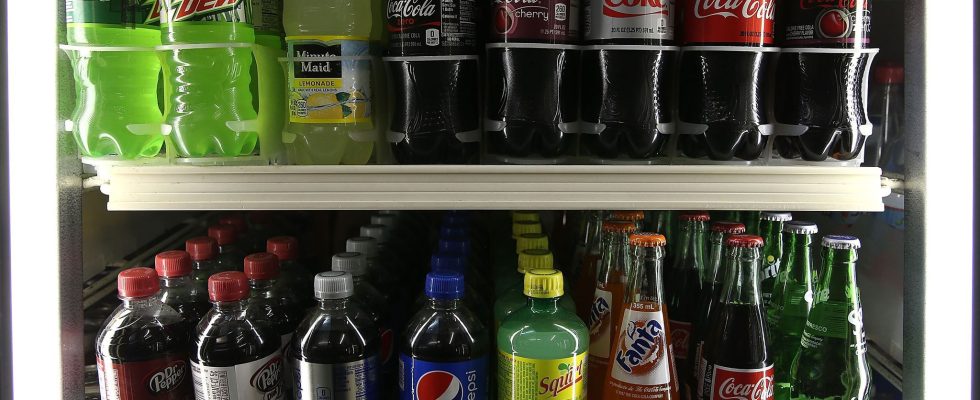Raising prices without threatening volumes, the equation becomes more difficult to solve for large companies. The disorganization of supply chains and the violent recovery of activity post-Covid had inflated their costs, and the war in Ukraine had amplified tensions, but they were generally able to pass these shocks on to their customers. The financial year is beginning to find its limits, as evidenced by the recent publications of the S & P 500 giants. In the first quarter, the 12% growth in Coca-Cola’s turnover was thus largely driven by a price effect. by 11%. The other side of the coin: in North America, volume sales stagnated; in Europe, they even declined by 3%. At its competitor PepsiCo, prices were raised by 16% when volumes crumbled by 2%. Bidding should calm down at the kings of soda. Coca-Cola plans to slow down the pace this year and PepsiCo is not expected to continue the label waltz.
Behind them, there is growing concern that customers will no longer follow, especially as the rise in production costs subsides. “The French government is calling for new discussions with large retailers to reflect disinflation in the food sector, points out Sarah Thirion, strategist at TP ICAP Midcap. We can therefore wonder about the ability of groups like Danone to generate more growth in turnover when, in the first quarter, it was only driven by the price effect”. The transport bill also fell significantly after reaching unbelievable levels. “The average cost of a container from Asia, which had risen to 15,000 dollars during the Covid crisis, has already returned to the 2019 rate, that is to say close to 2,500 dollars”, observes Christian Bito, vice-president of Swiss Life Gestion Privée.
Pinch margins
So far, despite the loss of purchasing power, the consumer has remained loyal, supported by favorable fiscal policies. But for François Cabau, economist at Axa IM, “we are nearing the end. In France, the latest figures for domestic demand were not flamboyant in the fourth quarter of 2022 and the first quarter of 2023, with an average contraction of 0, 5% of household consumption and 0.1% of business investment”.
In the United States, “if some consumers reduce their purchases or opt for cheaper products, we have not yet witnessed a real collapse in demand”, can we read in a note from the Swiss bank Mirabaud, which all the same points to the increase in retail sales of 2.3% in March, “the weakest increase since May 2020”. In an American economy shaken by the series of bankruptcies of its regional banks, the evolution of the job market will be a key factor. It should be added that in Europe, as in the United States, central bankers are achieving their ends: the tightening of monetary policies initiated for more than a year is tightening the screw on credit, which will also weigh on demand. François Cabau anticipates that “the profitability of companies will reach a plateau, at a higher level than before the crisis”. Sarah Thirion even believes that “a pinch in margins is to be expected, given the risk that companies will now revise their prices downwards when they have built up their inventory at high cost levels”.
Pricing power, the prerogative of a handful of companies
Is this the end of the “pricing power”, in other words the capacity of companies to impose their prices? Not for everybody. In reality, this “power”, which is closely monitored by asset managers when selecting the shares in their portfolio, is not limited to increasing its prices: volumes, and therefore profitability, must still resist. Companies with this trump card will thus stand out, justified by “a strong brand, a technological advance, high barriers to entry”, describes Julie Jourdan, manager at Amplegest of a fund specializing in this theme.
In the automobile, Tesla had this “pricing power”, but the tide turned with the toughening of competition. The pioneer of the electric vehicle “retains an ability to influence the market, but by lowering its prices to maintain its dominant position, it has sacrificed its profitability, which has fallen in one year from 17% to less than 12%”, notes Julie Jourdan, for who should rather be sought in “sectors with strong specialties” to find the price masters: in technology, with Microsoft, in niche pharmaceutical equipment products, with Danaher, and of course in luxury , which also benefits from the reopening of the Chinese market.
